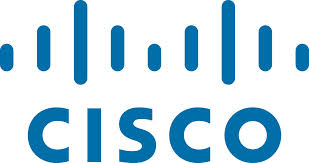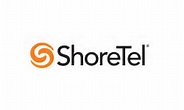Tuesday, June 23, 2009
Numbers That Spell Traction - 1 billion, 750,000 and 30
I get a lot of press releases, but don't post about them very often, as I'm not a journalist looking for news stories. As an analyst, what I do look for, though, are trends - and sometimes I come across a few unrelated items that collectively tell me something. I may see these individually, scan them and make a mental note - but there's nothing that really jumps out for blogging.
Yesterday, three such items crossed my path. All were interesting, but nothing that I felt compelled to blog about. After seeing the third item, though, I noticed a few patterns that told me a broader story, so here we are. That's what analysts do, and that's why I blog. So - three announcements, three companies (four actually), three storylines, and one nice trend. Here are the storylines...
Jajah - I'll start with them, since their number is the biggest, and we all know how much people - esp the media - love numbers. At 5am today, they announced the completion of their 1 billionth call (is that a word?). I don't know about you, but a billion is still a big number for me. We're not talking minutes here - we're talking calls connected over the various Jajah platforms around the world.
Voxbone/Nimbuzz - this is a twofer announcement between companies that now have a good reason to be working together. I got word of this from Voxbone yesterday, who announced that Nimbuzz has selected to provide local inbound numbers for mobile callers. Both companies are leading the way for mobile VoIP, and together they have some pretty attractive disruption for the incumbents. Each has their own story to tell, but basically Nimbuzz is growing real fast - 750,000 new signups per month - as claimed in the press release, so this is not a small thing. I've been closer to Voxbone, who has made their own mark with iNum and local inbound numbers world-wide.
Together, they now have a mobile VoIP solution that's not built around WiFi - or 3G for that matter. Users of Nimbuzz would now be contacted when outside of these networks and given the option for Nimbuzz to make a call over their IP network for much less than the cost of a conventional cellular call. Sooner or later you just knew something like this would come along, and has the right combination of saving money, being very accessible and easy to use. What's not to like - unless you're an incumbent mobile operator?
Calliflower - last but not least, here's where the number 30 comes in. I've written about Iotum's Calliflower conferencing platform before, and clearly they're on to a good thing. Yesterday they announced Calliflower is now available in 30 countries (and 100 cities). Aside from having more of a 2.0 look and feel than other conferencing platforms, Calliflower's main point of disruption is their flat rate pricing model. Taking advantage of low cost IP-based transport, they've made conferencing affordable for a broader range of the market, which plays especially well in countries where telecom rates and tariffs are still quite high. Again, what's not to like, especially from a home-grown Canadian company. And just to make sure you truly understand what makes their model so attractive - esp compared against "free" conferencing services, Alec Saunders - their CEO - does a great job explaining this in a recent blog post.
There you go - 1 billion, 750,000 and 30. Huge orders of magnitude between any of these, but they're all big in their own way. Each story is different, but they all support the same conclusions - voice is alive and well, VoIP is alive and well (anybody want to pick that thread up again?), innovation is alive and well, and small companies with funny names can still be very disruptive in the name of progress. That's worth posting about, don't you think?
Yesterday, three such items crossed my path. All were interesting, but nothing that I felt compelled to blog about. After seeing the third item, though, I noticed a few patterns that told me a broader story, so here we are. That's what analysts do, and that's why I blog. So - three announcements, three companies (four actually), three storylines, and one nice trend. Here are the storylines...
Jajah - I'll start with them, since their number is the biggest, and we all know how much people - esp the media - love numbers. At 5am today, they announced the completion of their 1 billionth call (is that a word?). I don't know about you, but a billion is still a big number for me. We're not talking minutes here - we're talking calls connected over the various Jajah platforms around the world.
Voxbone/Nimbuzz - this is a twofer announcement between companies that now have a good reason to be working together. I got word of this from Voxbone yesterday, who announced that Nimbuzz has selected to provide local inbound numbers for mobile callers. Both companies are leading the way for mobile VoIP, and together they have some pretty attractive disruption for the incumbents. Each has their own story to tell, but basically Nimbuzz is growing real fast - 750,000 new signups per month - as claimed in the press release, so this is not a small thing. I've been closer to Voxbone, who has made their own mark with iNum and local inbound numbers world-wide.
Together, they now have a mobile VoIP solution that's not built around WiFi - or 3G for that matter. Users of Nimbuzz would now be contacted when outside of these networks and given the option for Nimbuzz to make a call over their IP network for much less than the cost of a conventional cellular call. Sooner or later you just knew something like this would come along, and has the right combination of saving money, being very accessible and easy to use. What's not to like - unless you're an incumbent mobile operator?
Calliflower - last but not least, here's where the number 30 comes in. I've written about Iotum's Calliflower conferencing platform before, and clearly they're on to a good thing. Yesterday they announced Calliflower is now available in 30 countries (and 100 cities). Aside from having more of a 2.0 look and feel than other conferencing platforms, Calliflower's main point of disruption is their flat rate pricing model. Taking advantage of low cost IP-based transport, they've made conferencing affordable for a broader range of the market, which plays especially well in countries where telecom rates and tariffs are still quite high. Again, what's not to like, especially from a home-grown Canadian company. And just to make sure you truly understand what makes their model so attractive - esp compared against "free" conferencing services, Alec Saunders - their CEO - does a great job explaining this in a recent blog post.
There you go - 1 billion, 750,000 and 30. Huge orders of magnitude between any of these, but they're all big in their own way. Each story is different, but they all support the same conclusions - voice is alive and well, VoIP is alive and well (anybody want to pick that thread up again?), innovation is alive and well, and small companies with funny names can still be very disruptive in the name of progress. That's worth posting about, don't you think?
Labels:
Calliflower,
J Arnold and Associates,
Jajah,
Jon Arnold,
VoIP,
Voxbone
Subscribe to:
Post Comments (Atom)











No comments:
Post a Comment